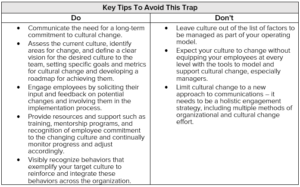Avoid Three Traps For RevOps Success In 2024
Evolving your operations function from year to year requires careful planning, strong stakeholder management, and avoidance of common mistakes that erode functional success. As 2024 picks up pace, I’m highlighting three traps in functional design and implementation that will derail your long-term efforts and looking at how to avoid these traps as you build your operations function for long-term success. Many thanks to my colleagues, Gordon Barnett and Hannah Bradbury, in the development of this blog!
Trap 1: Confusing Org Charts For An Operating Model
While an organization chart visually indicates reporting lines, it doesn’t represent the complexity of modern operations organizations. An operating model is much broader and defines how the function operates to deliver customer and stakeholder value. This encompasses not only structure and reporting lines but also defining which stakeholders it intends to support and the value it will provide, along with the capabilities, governance, and leadership required to enable that value and achieve its strategic goals. The operating model considers the interdependencies between different functions and the operating units (analytics, technology, and process, for example) within the function, as well as how operations resources and their stakeholders work together to deliver customer value.

Trap 2: Treating Operating Model Design As A One-Time Effort
Operating model design is an ongoing, iterative process — not a one-time effort. According to Forrester’s Future Fit Survey, 2023, 78% of business and technology decision-makers at future fit organizations strongly agree that their organization is structured to be flexible enough to absorb major changes, compared with just 19% of those at traditional organizations. As organizations grow and change, their organizational structure must evolve to support their new or revised strategic objectives. RevOps organizations must continually reassess their design to ensure that it supports their goals, mission, and cultures.

Trap 3: Assuming That Cultural Change Will Happen Organically
Cultural change is a complex and challenging process that requires time, effort, and sustained commitment from all members of RevOps and the wider go-to-market functions. Seventy-two percent of business and technology leaders at future fit organizations strongly agree that their organization instills the need for a culture that supports constant change and adapts quickly, compared to just 20% of business and tech pros at traditional organizations. Cultural change involves shifting beliefs, values, and behaviors entrenched in sales and marketing’s traditionally siloed and internally focused approach. It requires a multifaceted approach involving leadership, communication, training, and a willingness to learn and adapt.

